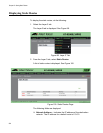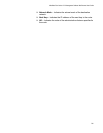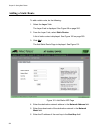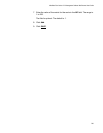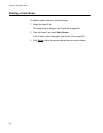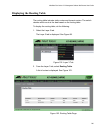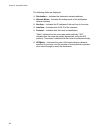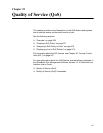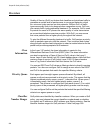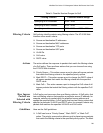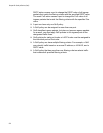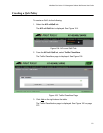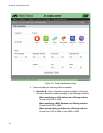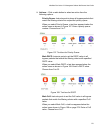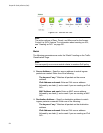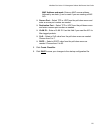
Chapter 22: Quality of Service (QoS)
268
Overview
Quality of Service (QoS) is a feature that classifies and prioritizes traffic to
guarantee a certain level of performance in converged networks, which
run voice and video services on data networks. Without QoS, all traffic
types are equally likely to be dropped when congestion occurs. QoS can
give certain traffic types preferential treatment. For example, QoS is used
to provide the users of IP phones the same quality of voice transmission
as conventional telephone service provides. With QoS, you can ensure
that voice packets have a higher priority throughout the network.
To give the different forwarding treatment to traffic, QoS assigns a priority
class to packets upon entry into the network. Then, switches and routers
along the path use the class information to select a certain behavior for the
packet and provide appropriate QoS treatment.
Class
Information
In the Layer 3 IP packet, the class information is carried in the
Differentiated Services Code Point (DSCP) field. The class information
can also be carried as a Class of Service (CoS) value in the Layer 2
frame. Layer 2 Inter-Switch Link (ISL) frame headers have a User field that
carries a class of service (CoS) value; Layer 2 802.1Q frame headers
have a Tag Control Information field that carries the CoS value.
You can use DSCP and CoS values as filtering criteria to classify incoming
packets. You also can configure QoS to assign a new value to the DSCP
and CoS to the packets that match the specified filtering criteria.
Priority Queue Each egress port has eight egress queues allocated. By default, all
queues on all ports are serviced in strict priority order. This means that the
highest numbered priority queue, queue 7, is emptied first. When queue 7
is completely empty, the next highest priority queue, queue 6, is
processed. This process is continued until you reach queue 0. For a strict
priority queue to be processed, all higher priority queues must be empty.
You can configure QoS to set the packets that match the specified filtering
criteria to an egress queue on a port.
Classifier
Number Ranges
QoS policies are identified by classifier numbers. When you create a QoS
policy, you must choose the correct classifier number based on whether
you specify an IP address or MAC address as a filtering criterion. See the
classifier number ranges for QoS policies in Table 9 on page 269.



